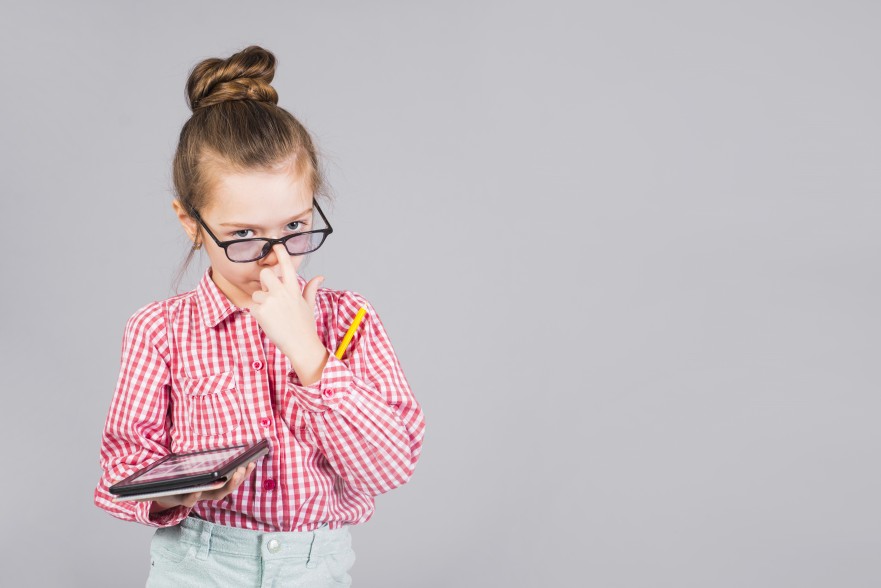“Mrs. Clark! Mrs. Clark!” shouted a student from across the Target parking lot a few weeks ago. I quickly turned around searching for the owner’s voice through a sea of cars and SUVs. A masked girl wearing a sweater, jeans, and glasses emerged between two cars and waved at me. I smiled (under my mask of course) and said, “Hi! I am so happy to see you!”
As I said these words, I quickly racked my brain for this student’s first name. However, nothing came to mind. Zero. Zilch. Nada. Not even the first letter. She introduced herself and reminded me that she is in my 4th-period class this semester. I apologized and blamed it on the mask. However, I felt awful because I always recognize my kids.
Last spring when we suddenly began remote learning, I had nearly seven months of seeing my students’ faces five days a week. When some students were reluctant to turn on their cameras, I didn’t worry too much about it because I already had a connection and relationship with them. We also had built a classroom community all year and many students turned on their cameras without prompting.
Realizing that we may return to remote learning this year, I spent several weeks this summer agonizing over the camera conundrum. Cameras on or cameras off?
My first thought was that we needed to see each other’s faces, so I would require my students to turn on their cameras! Voila! Problem solved!
I called a trusted colleague and explained my bright idea! She was honest. Brutally honest. She hated my idea. She spent the next several minutes explaining why requiring students to turn on their camera hinders more than it helps.
She said students didn’t ask for teachers and peers to enter their homes. This is not what students signed up for when they enrolled in school. They signed up to learn, and they didn’t need their cameras on for that.
She explained people’s homes are personal spaces, and we must respect that. We have no idea what is happening in our students’ homes during our classes. Are they caring for siblings, grandparents, or their children? Is there a ton of noises and distractions around them? Are they embarrassed about their home or where they are learning? Requiring cameras puts students into the public in a way they can’t control and may not want to be seen.
I spent the next several weeks thinking about her argument against the camera. Do I need to see the kids while teaching the kids? Did requiring my students to turn on their cameras support their learning or did it make them feel uncomfortable, less likely to attend class, and reluctant to learn? I wrestled with these questions as we began school in August.
I finally decided to let the kids be the masters of their cameras. I explained my thinking in terms of their homes as their personal spaces and as much as I wanted to see their lovely faces, I understood that this simply wasn’t something I felt comfortable requiring. Instead, I offer a quick moment at the beginning of class to turn on cameras and wave with no pressure and not required. Some days many students participate and some days, they don’t. And I am okay with that.
As we began to navigate online learning, we also figured out that many students don’t have the bandwidth capable of running the cameras and allowing them to use the internet simultaneously during class, especially when multiple people rely on the internet for school or work in their homes. This became another argument against requiring cameras.
The students also said their computers lag when I have my camera on, so I turn mine off when I can to help them speed up their internet.
While it’s not ideal or enjoyable to run into a student and not recognize them, I understand that it is okay given the circumstances in which we live and teach right now. I have students whose faces I will never see. But that doesn’t stop me from showing up and giving my students the best possible learning experience regardless of their camera status. I want them to feel comfortable in my virtual classroom and learn as much as possible without the pressure to show their face.
How are you handling the camera conundrum? Required? Optional? Somewhere in the middle? Leave a comment below.
Image from< a href=’https://www.freepik.com/photos/background’>Background photo created by freepik – www.freepik.com</a>










Comments 3
Leah, this is such an important topic and I’m so glad you brought it to light. We’ve had the camera debate in our district as well. There’s a strong argument for both. But it sounds like you haven’t let the lack of cameras keep you from making meaningful personal connections with your kids! Your student obviously knows you, knows your face, and loves you! It sounds to me like you SEE her, even without seeing her face in class.
I think I am between optional and somewhere in the middle. When I am teaching live, I prefer for cameras to be on so that I can at least try to make sure my students are paying attention. However, I teach first grade and I have found that my students need a lot more reminders to sit still, take things out of their mouths, put their toys away, etc. When they are doing independent work after the lesson, I tell them they can turn their cameras off if they would like to. Some of my students do not turn their cameras on at all, and I don’t come down on them hard for it. Although now that they have figured out how to change their background on GoogleMeet, the cameras are getting turned on a lot more often so they can see themselves in outer space or at the beach!
If I taught older students, I feel like I would handle it the way you are. I know that when I personally am in a meeting or taking an online class, I automatically turn my camera off after the meeting begins. I’m always there listening, but I get worried about what my one year old is doing in the background behind me.
I can only imagine how difficult it is to teach the littles right now! You are a rockstar! I can’t imagine trying to get them to sit still! Kudos!